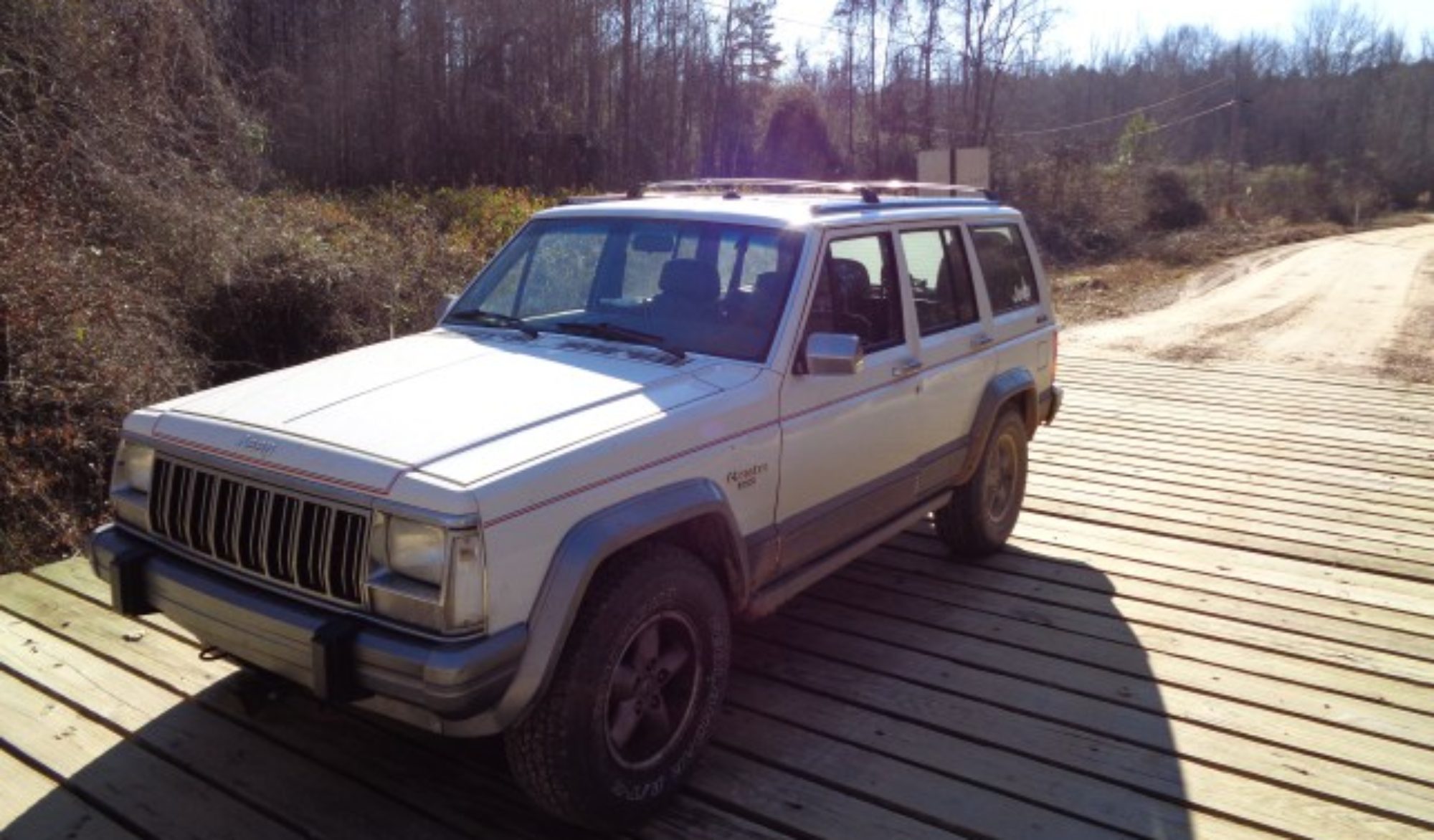Rebuilding the Green Jeep
Jennifer’s mother’s Jeep Cherokee caught fire. We think it had something to do with the power steering. She was making a hard turn in a parking lot when she saw smoke coming from under the hood. By the time she got the Jeep moved to a safe place and tried to open the hood, the fire was fully evolved.
The fire department responded quickly pried open the hood with crow bars. The entire grill and front header were burned and melted. Under the hood, the wiring harness and most of the hose were gone as well.
Jennifer began by stripping off the burned parts. I happened to have a parts Jeep of similar vintage available to donate the wiring harness and many of the small parts. She elected to swap the entire intake manifold and engine bay harness as a unit including the ECU. This method meant a lot of the tedious connectors did not have to be disturbed.
Many parts like the radiator, power steering pump, brake booster and master cylinder were bought new. The green Jeep was originally equipped with Anti Lock Brakes. However the system had never worked properly. To reduce complication in the rebuild we decided to swap to standard brakes since the donor Jeep was equipped that way.
The Brake swap meant fabricating new brake lines. The old passenger side front line was reshaped and a new fitting was installed. The driver’s side line was fabricated from raw tubing and new fittings. The rear line needed only a fitting swap to be compatible. The rubber line to the rear axle was replaced as it was damaged removing the steel line. The brake proportioning valve was taken from the donor Jeep. The brake booster and master cylinder are new.
The engine bay wiring harness goes though the firewall in two places. One place handles connections for the anti lock brakes and the other is for the transmission computer. We elected to remove the dash in the green Jeep to make sure we handled all the connection properly. We did not remove the dash in the donor Jeep after we were familiar with where all the pugs were.
When getting ready to put the exhaust manifold back in place on a new gasket, I noticed it was cracked as they commonly are on 4.0 Jeeps. I removed it and welded up the crack before reinstalling it. Jennifer set the intake in place and routed all the wires attached to it. She also swapped in most of the vacuum lines from the donor Jeep. He brother sent parts from a Jeep he was scrapping with helped with many of the small parts such as a power steering reservoir cap, and many of the small vacuum fittings. He also supplied a new valve cover complete with the proper fittings and a cap.
The transmission rubber line to the radiator was melted as well. Rather than purchase the pricey disconnect that is so troublesome, I elected to use some of the excess power steering return hose we had and make a line. I used my tube flaring tool to make a bubble on the end of the tube. I then clamped the rubber hose in place using a worm drive hose clamp.
She purchased a new power steering hose, but it had the wrong fitting on one end. So we ended up swapping one from the donor Jeep. We also had to reuse the old pulley off the damaged pump as the new power steering pump did not come with a pulley or a reservoir cap.
The front of the Jeep was slightly damaged from where the hood was pried open. I used a High Lift jack to work the steel structure back into place. The hood itself will have to be replaced.
Yesterday, Jennifer set about making all the connections necessary to crank the engine for the first time. After the fuel system primed, the engine started quickly. The idle was a little rough as the computer adapted to its new home. After a few seconds of running however, it smoothed right out.
There is still a lot of work left to be done. The brakes have to be bled, the power steering system bled as well. The transmission kick down cable was damaged so the transmission pan will have to be dropped to repair that. The front header with the headlights needs to be reinstalled and we still need to procure a hood. It should be drivable again soon.
We may have to change its name form Mr Green Jeep to the Phoenix.
